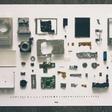
In‑article AdSense (replace with your code)
Short version: Place the main router near the center, wire the backhaul when possible, give your network one SSID, and let the mesh handle steering. The settings below solve 80% of streaming glitches and dead zones we see in apartments and houses.
When do you actually need mesh?
- Weak signal in rooms two or more walls from the router.
- Stutters on TV or video calls when you move around the house.
- IoT devices at the edges of your home losing connection.
If your home is under ~900 sq ft and open, a single modern router may be enough. Mesh helps most in multi‑story houses, concrete/brick walls, or long layouts.
Placement that works (every time)
- Main router: put it as central and high as the modem/ONT allows, off the floor, away from metal racks and microwaves. If the ISP drop is stuck in a corner, run one Ethernet from there to a central location and hang the main node there.
- Satellite spacing: think “leapfrog,” not “spread out.” Each satellite should have good signal to the previous one (‑55 to ‑65 dBm). Too far and they repeat weak signal; too close and you waste capacity.
- Vertical coverage: for multi‑story homes, place satellites roughly above/below each other near stairs or open voids so floors can “see” each other.
Backhaul: wired beats wireless
Backhaul is the link mesh nodes use to talk to each other. You have three choices:
- Ethernet (best) — one cable from each satellite to the main node or a switch. You keep full Wi‑Fi bandwidth for clients, and stability jumps.
- Dedicated 5 GHz/6 GHz wireless — many kits reserve a band just for backhaul. Works fine when line‑of‑sight exists and walls are light.
- Powerline/MoCA — plan C. MoCA (over coax) is usually solid; powerline is hit‑or‑miss depending on your wiring.
If you can wire even one satellite (say, the living room TV node), do it. Mixed backhaul is normal—wire what you can, leave the rest wireless.
One SSID, one password
Give your mesh a single network name and password across bands (2.4/5/6 GHz). Let the mesh steer clients between bands instead of creating “Home‑2G” and “Home‑5G.” Multiple SSIDs create sticky clients that refuse to roam.
Channels & power: the quick setup
- 5 GHz: use 80 MHz on cleaner channels (e.g., 36–48 or 149–161). If neighbors are dense, drop to 40 MHz for stability.
- 2.4 GHz: choose channel 1, 6, or 11 only. 20 MHz width. Auto power is fine; avoid “high” if you cause/receive interference.
- 6 GHz (if you have Wi‑Fi 6E/7): keep 80 MHz unless you’re alone—then 160 MHz for short‑range speed.
Pro tip: if your mesh supports it, turn on client steering/band steering and 802.11k/v/r roaming assistance. These features gently push devices toward better nodes and channels without aggressive disconnects.
Roaming & sticky devices
Phones and laptops usually roam well. Smart plugs, printers, and older cameras are the troublemakers. If a device randomly drops when you move rooms:
- Lock that device to 2.4 GHz only if your mesh allows per‑device band assignment.
- Disable “Wi‑Fi Assist”/“Smart Network Switch” type features on the device to reduce flip‑flopping.
- Give IoT devices a short, unique DHCP lease (e.g., 2–4 hours) so they get fresh IPs after hiccups.
The one setting that fixes most stutters: QoS
On streaming nights or heavy calls, enable your mesh’s QoS/Traffic Prioritization and mark your TV/console/meeting laptop as “high priority.” This reserves airtime during congestion. It’s not magic, but it prevents that “everything freezes when someone uploads” feeling.
Security checklist (fast)
- Change admin password. Turn on auto‑updates for the mesh firmware.
- Use WPA3 (or WPA2/WPA3 mixed if you have older devices).
- Disable WPS. Keep remote administration off unless you truly need it.
- Create a Guest network for visitors and smart gadgets you don’t fully trust.
Want more? Our broader recommendations live in Privacy Toolkit 2025 and the Privacy Policy.
Troubleshooting, in order
- Move, don’t tweak first. If a satellite shows weak backhaul, shift it one room closer and re‑test. Placement beats settings.
- Scan the air. Use a phone Wi‑Fi analyzer to see neighbor networks. If your 5 GHz channel is crowded, change it.
- Reboot the modem, then the mesh. Modem first, wait 2 minutes, then mesh. You’ll clear stale DHCP leases.
- Ethernet test. Plug a laptop into a satellite’s LAN port. If wired is fast but Wi‑Fi is slow, reduce channel width or relocate.
- Factory reset only last. Rebuild clean if you’ve stacked years of settings.
In‑article AdSense (replace)
Common mistakes we see
- Satellites on bookshelves or TV cabinets surrounded by metal and glass—signal tanks. Give them space.
- Hiding nodes in closets “to look clean.” Your Wi‑Fi will be clean…ly bad. Out in the open wins.
- Mixing too many extenders with mesh. Use either mesh satellites or extenders, not both.
- Separate SSIDs per band. Creates sticky clients and roaming headaches.
FAQ
Q: Do I need Wi‑Fi 7 for mesh?
A: No. Wi‑Fi 6/6E mesh is excellent for most homes. Wi‑Fi 7 helps with multi‑gig internet or dense device environments, but placement and backhaul matter more.
Q: How many satellites?
A: Start with two nodes (main + one satellite). Add a third only if you still have weak spots after following placement rules.
Q: Which brand should I buy?
A: We’ve had reliable results with the big names. The most important factor is backhaul capability (Ethernet ports, dedicated radio) and how simple their app is for you.
